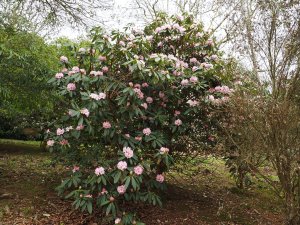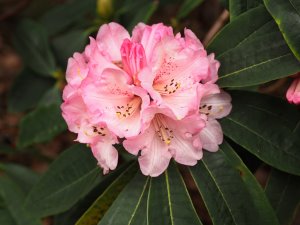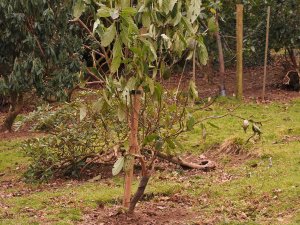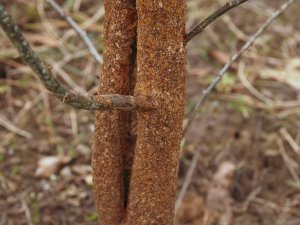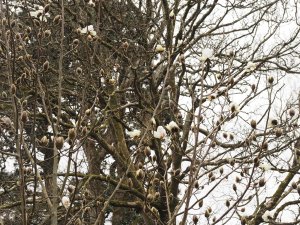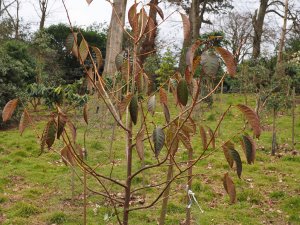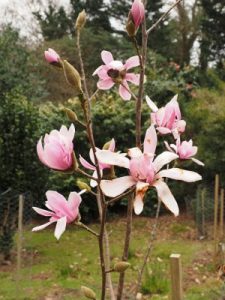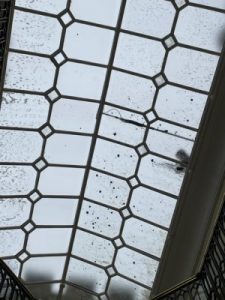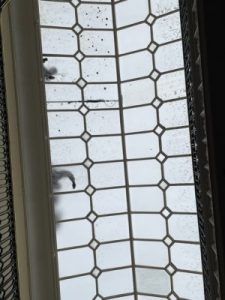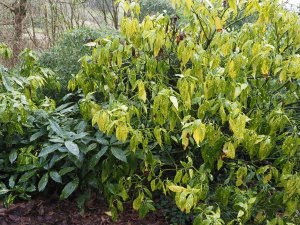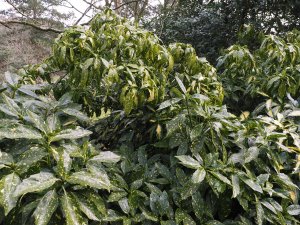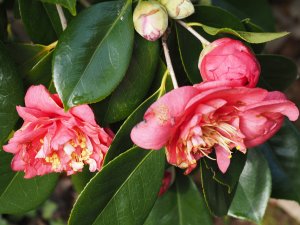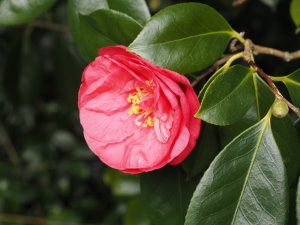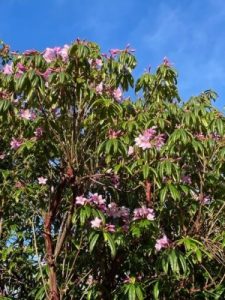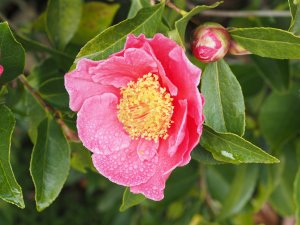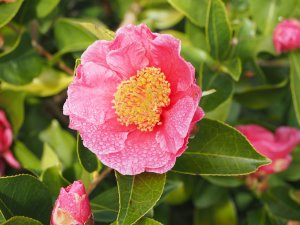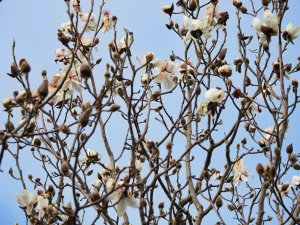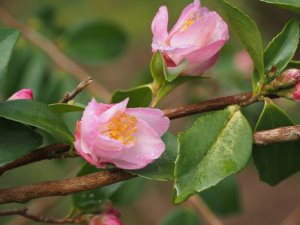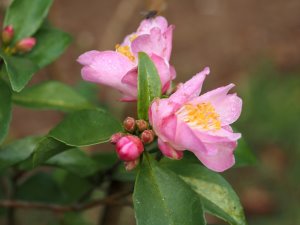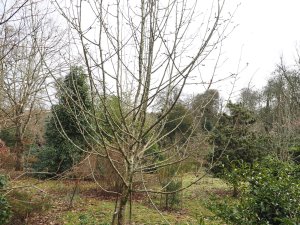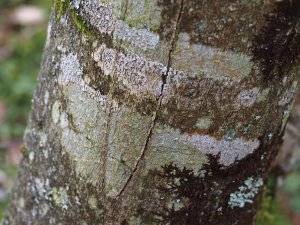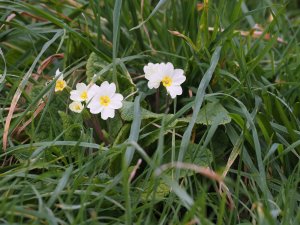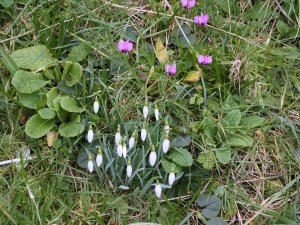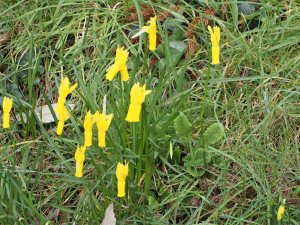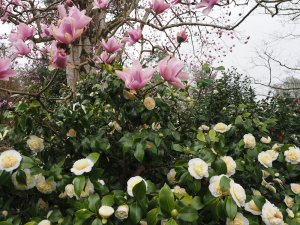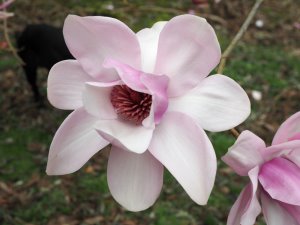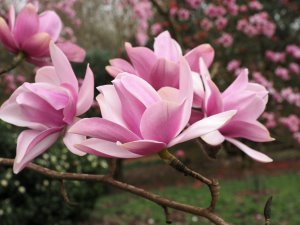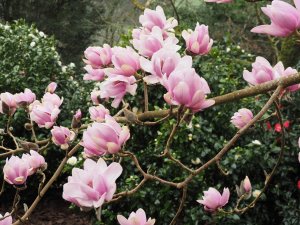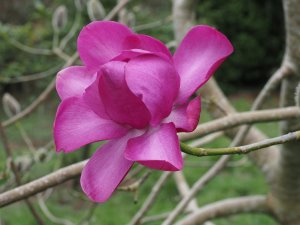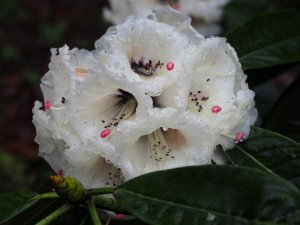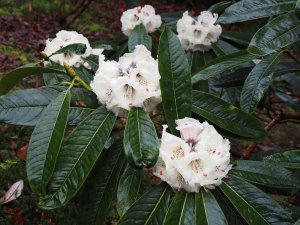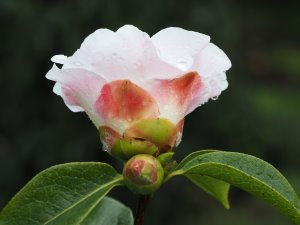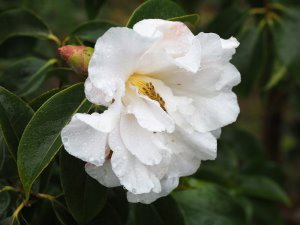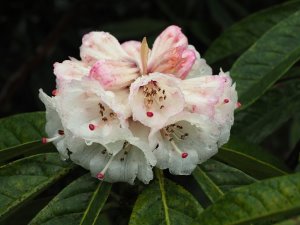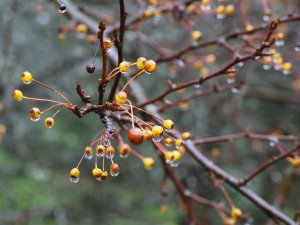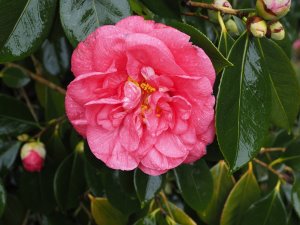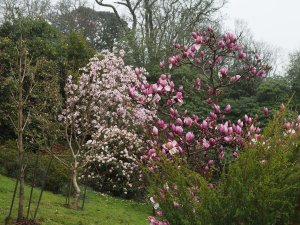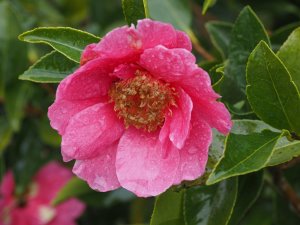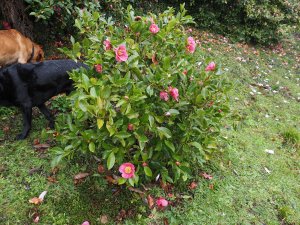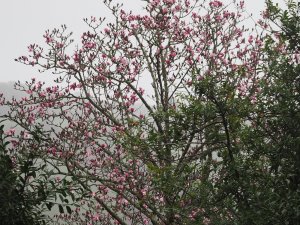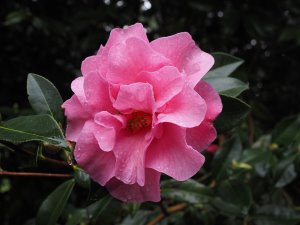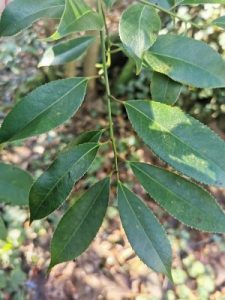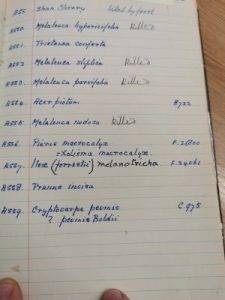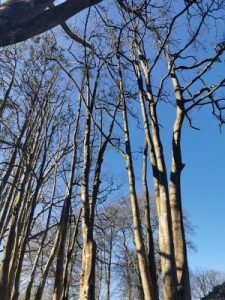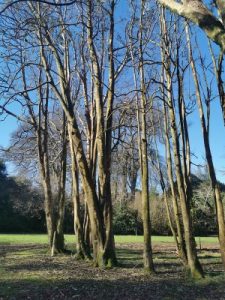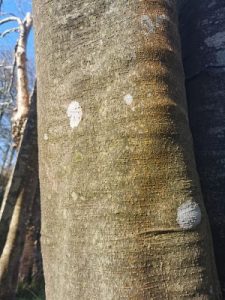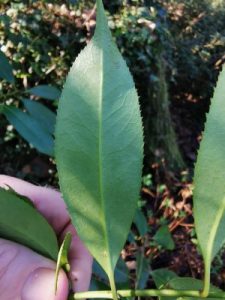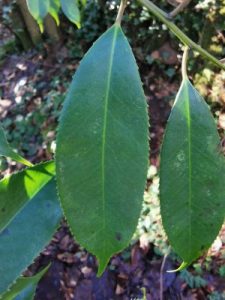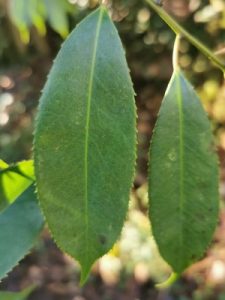2025 – CHW
We have had a week of light but cold east winds and now these are forecast for another one.
FJW’s Rhododendron decorum cross is looking good outside the front gate.


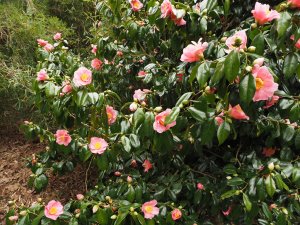
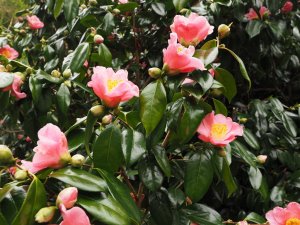
For some reason blobs of lichen have grown on one side of the gallery. It is not growing directly on the glass but on film of plastic material which filters UV light entering the building. The UV film has been in place for years and replaced fairly recently. Quite why it has started growing on the less exposed and less sunny side of the gallery roof this winter is a mystery. It has never occurred before. The suppliers of the UV film said we could wash off the lichen blobs with warm water which we did today in the rain. It looks much better from below.
Attached is a letter from the RHS with certificates for the awards showed at the Rosemoor Show in March and April 2023. By RHS standards a swift response!
The moment the Cornish magnolias flower, spring has arrived in England.
Spring has arrived in Cornwall, today 16 February 2024. The date was declared by The Nare, together with The Great Gardens of Cornwall, as part of Cornwall’s Spring Story – which marks the moment the Cornish magnolias flower, spring has arrived in England.
Thanks to the Gulf Stream, the county’s mild, sub-tropical climate ensures that Cornwall sees signs of spring much earlier than the rest of the country.
The first botanical day of spring is declared once six magnificent Magnolia Campbellii in each of the Great Gardens of Cornwall have flowered, with at least 50 blooms on each of the champion trees.
Cornwall’s Spring Story was founded by Toby Ashworth, proprietor of The Nare Hotel, in partnership with the Great Gardens of Cornwall in 2012 – to ensure garden lovers enjoy the splendid sight of the early spring Magnolia Campbellii.
The six champion Magnolia Campbellii trees are located within Cornwall’s Great Gardens of Caerhays, Trebah, Tregothnan, Trewidden, Trewithen, and The Lost Gardens of Heligan. Annually, each head gardener closely monitors the trees, signalling the start of spring the moment all six prized Magnolia trees flower with at least 50 blooms.
Mr Ashworth says: “Spring always arrives early in Cornwall, often an entire month before the other parts of Britain, and this year is no different. We were delighted to see the blooms flowering in the beautiful gardens across the Duchy and to welcome many friends to The Nare to celebrate Cornwall at its best.”
Charles Williams, owner of Caerhays Castle and Gardens and Chairman of the Great Gardens of Cornwall, adds: “There’s nowhere better to enjoy early spring than in Cornwall. Garden lovers should plan to come here in March to really see the gardens in all their spectacular and unique beauty. Flowering Magnolias are the true start of the Spring season”.
2023 – CHW
The form of Phytophthora which just kills Aucuba is striking hard get again on our windbreak below 4-in-Hand. Much evidence of impending death here as I have seen elsewhere here and in other gardens for several years now.
2022 – CHW
Zantedeschia aethiopica still in full normal growth and untouched by winter.
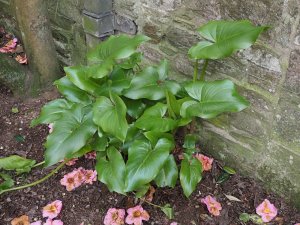
In researching an article on the true identity of several veteran holly trees here collected by George Forrest I discovered in Bean a reference to a group of seven Ilex cyrtura trees growing in Trewithen Gardens. I therefore wrote to Gary Long, the head gardener there, to see if the group still existed? His reply and photographs appear here in full.
Sent: 08 February 2021 09:50
To: Gary Long
Cc: Sam Galsworthy
Subject: Ilex puzzle
Dear Gary
Good to hear you were opening at the Great Gardens meeting on Friday.
I am writing a (probably very dull) article on Ilex species here. I see that Bean mentions seven Ilex cyrtura (Forrest collected) growing at Trewithen as a clump. This holly species was originally called Ilex forrestii perhaps or then misidentified as Ilex ficoidea.
Are your plants still going and could you let me have a few pictures please of the leaf/trunk? Even a berry or a cutting? Bean says that there was an Ilex cyrtura here and this was identified by Susyn Andrews in 1984 but it may well have died.
As ever, Ilex have had name changes and muddles. We have five 1920s Forrest hollies which have been identified differently by different experts over the years which we are trying to pin down once and for all. Originally called I. insignis, sometimes I. forrestii, more recently I. cyrtura but are possibly now identified as I. dipyrena (four) and I. kingiana (one).
insignis = hookeri? nowadays we think.
forrestii = kingiana nowadays.
Hope you can enlighten or extend the puzzle!
Thanks.
CharlesFrom: Gary Long
Sent: 08 February 2021 16:20
To: Charles Williams PA
Subject: RE: Ilex puzzle
Afternoon
It was good to hear what others were doing, helps us feel we are not alone in the confusion!
Ilex cytura:
George Johnstone day journal/lists/notebook has two Ilex entered. The book starts alphabetical then goes into lists of plants with a garden tag number on the left (we have no reference or map for these other than finding the occasional tag on plants in the garden), name in the middle then collection number on the right.
The first entry is:
R553 Ilex corallina F. (and no number)
Next is:
A557 Ilex (forrestii) melanotricha (Added in later in different colour pen, I have attached an image) F.24061
Our large stand of the trees is on main lawn and self-seed quite readily around the garden. There is a champion tree among them measured in 1985 and 2004 where in Owen Johnson’s “Champion trees of Britain and Ireland” book he gives it the common name of “Trewithen Holly”. They are semi-deciduous, large trees. They fruit but I haven’t any photos.
Hope this goes some way to sorting the puzzle. Pop in, at a social distance!, and have a look at them if that would help?
Regards
Gary
Gary Long
Head of Trewithen Gardens and Parks
Truro
Cornwall
TR2 4DDIt would seem that the naming of these, possibly, Ilex cyrtura has gone through many evolutions over the years just as ours have here.What is clear from these photographs is that the Trewithen holly group is a completely different species to our own unidentified veterans. The Trewithen trees are semi evergreen and pretty much devoid of leaves today after the second Beast from the East. Our veterans are clearly fully evergreen and the leaf shape is totally different.Like our Ilex kingiana and Ilex perado ssp. azorica the Trewithen plants self-seed and via birds around the clump and through the garden.I am fairly sure that we do not have Ilex cyrtura growing here if that is what it actually is?My holly article is written but needs to be peer reviewed in time by Susyn Andrews and Tom Hudson.




